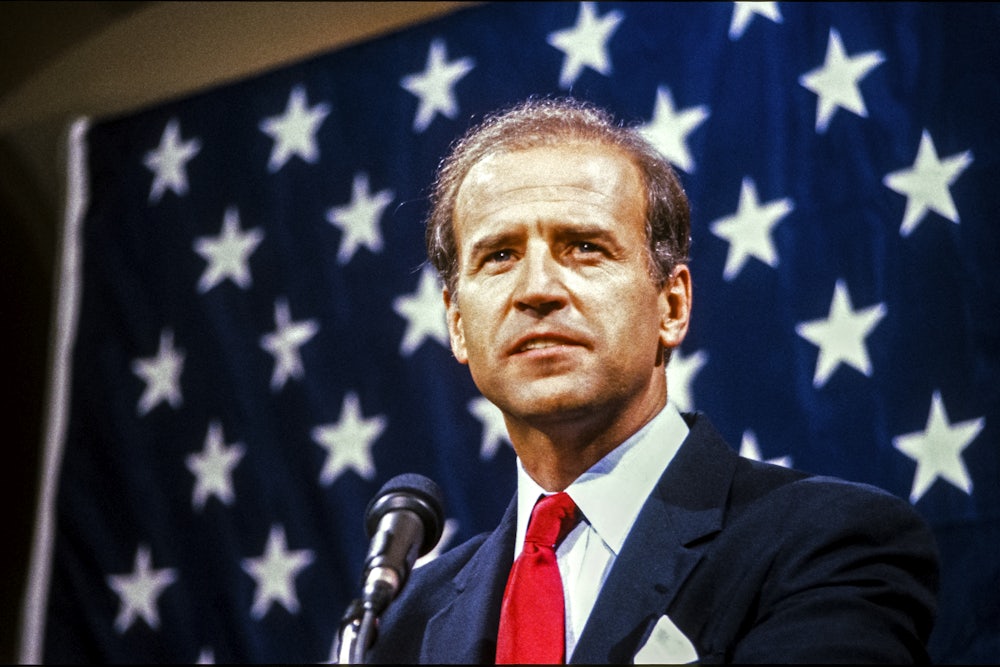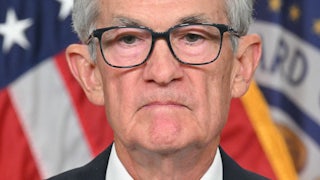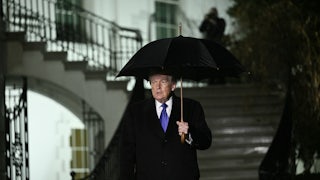As Joe Biden was preparing his first run for president in January 1988, his closest aides made an emergency trip to Wilmington to talk the candidate out of what they considered a disastrous folly: buying another house. Biden was already struggling to pay off the debt on another equally grand house, a 10,000-square-foot Du Pont mansion whose upkeep had put his finances in disarray. As Richard Ben Cramer describes it in his book What It Takes: The Way to the White House, a masterpiece about the 1988 election and a remarkably prescient portrait of Biden, the 44-year-old senator drove his advisers all around Wilmington in his Bronco truck, trying to explain why he absolutely must have this other house on top of the one he couldn’t afford.
“The first thing you’ve got to know about Joe is the house. Probably the first thing he will show you,” Cramer begins, referring to Biden’s Du Pont mansion. “It’s the kind of a place 1,000 Italian guys died building. A library fit for a Carnegie, a living room about half an acre … whatever he gets, the house eats for breakfast. That house loves cash.… So that’s why Joe decided he had to have another house this time. It was 17 acres, a $1.1 million estate … an enormous main house with a sauna in the master bath, a swell apartment over the four-car garage … and the outdoor pool had a separate cabana that was itself like a nice suburban home.… And then there was the tennis house with the other sauna and the indoor pool … and, of course, the indoor tennis court ... it was a compound … it was … Hyannisport! He could see the goddamn thing in Life magazine.”
One of Biden’s aides told him, “You can’t run as a Democrat, a guy who’s in touch with middle-class values when you’re on TV in your indoor tennis court.” But Biden wasn’t listening, Cramer reports: “No, he said, with a dazzling Biden smile, into the sudden silence … there was another house. (‘Believe it or not … this other thing happened.…’) And this time, he got all three of them into the Bronco for the trip to the city.”
Cramer’s book, published in 1992, describes a whole range of Biden behavior and reflexes that we are seeing all too clearly in the current stand-off between the president and those who are trying to persuade him to drop out of the presidential race: single-minded fixation on a goal; a stubborn refusal to listen to advice or contrary evidence; a willingness to act and never to doubt or second-guess himself; a seemingly infinite belief in his ability to beat the odds, to talk anyone into anything; and a conviction of being a man destined for greatness. “The house, the world, were malleable to his will,” Cramer writes.
These behaviors have often served him well—he did eventually become president—although it is worth recalling that in 1988 he was forced to withdraw from the race after it was discovered he plagiarized a speech by the British politician Neil Kinnock. Biden’s aides were also not wrong about his real estate obsession: He spent much of his life juggling multiple mortgages, underwater in debt, and when he retired from the Senate he was the chamber’s poorest member. “There was (to be perfectly blunt, as Joe would say) a breathtaking element of balls,” Cramer writes. “Joe Biden had balls. Lots of times, more balls than sense. This was from the jump—as a little kid. He was little, too, but you didn’t want to fight him—or dare him. There was nothing he wouldn’t do.”
What Cramer shows beautifully is that you have to be a little crazy to want to run for president, to believe you can and should be the most powerful person in the world. It requires an almost pathological belief in yourself and your destiny. In Biden’s case, Cramer describes the strange combination of inferiority and superiority complex, failure and success, that become fused into a powerful, stubborn, preternatural determination that he can overcome any obstacle. On the one hand, Biden comes from an Irish immigrant family with something of a chip on its shoulder, which his Irish American mother, Jean Finnegan, compensates for by pumping up their self-regard: “She told those kids, every day, over and over, that they were Bidens, and there was nobody better than a Biden.” His father goes from relative affluence to abject failure, forced to move into his wife’s family home after he loses his job, and then later enjoys some success as a car salesman.
From these painful experiences, the phrase Biden repeats over and over today: “When you get knocked down, you get back up.” Joe is the stuttering child whom his classmates tease mercilessly until he grabs one of his tormentors by the throat. As he matures, Joe becomes popular, the kid who accepts all the most dangerous dares, winning bets with friends by performing unlikely feats of derring-do. He agrees to scamper under and across the carriage of a moving dump truck. He swings among the ropes attached to the steel girders of an unfinished building some 60 feet in the air. The trick for Biden, Cramer writes, is “imagination”—if Joe could imagine something, he could do it. “Joey was always quick with a grace born of cocky self-possession. He didn’t—like some kids that age—doublethink himself. So his movements got jerky and he screwed up … no. Once Joey set his mind, it was like he didn’t think at all—he just did. That’s why you didn’t want to fight him.”
Biden was a mediocre student at the University of Delaware and Syracuse Law School, which fed a certain resentment toward those (like Bill Clinton and Barack Obama) who went to Ivy League schools. Still, he had no hesitation in challenging a seemingly unbeatable incumbent senator (Caleb Boggs) for one of Delaware’s two Senate seats, even though he was only 29, had done little of distinction in his brief law career, and had almost no money for an election campaign. “Biden was at three percent in the polls when he rented the best and biggest Ballroom in the state for his victory celebration,” Cramer writes. Against all odds and the advice of friends, Biden wins, becoming one of the youngest senators in U.S. history. Then, just weeks before he was to be sworn in, tragedy strikes when his wife, Neilia, and their daughter, Naomi, are killed in a car crash. (His sons, Beau and Hunter, are in the same car but were not killed.) When you get knocked down ...
In Cramer’s book, even as Biden gears up to run for president there is almost no discussion of ideas, of programs, of what vision the candidate has for the country. Biden comes off as something of an intellectual lightweight with an outsize, unnatural belief in his own ability to succeed. It almost doesn’t matter what the challenge is. He seems to genuinely believe that he can run through a brick wall, especially if people tell him he can’t. He ran again for president in 2008 and failed again, unable to compete with the much more charismatic Barack Obama, whose vice president he then became. He should have run—and probably would have won—in 2016, but Obama discouraged Biden in favor of Hillary Clinton, another slight that factors in Biden’s stubborn refusal to step aside today.
It is hardly surprising, knowing Biden’s early history, that his first instinct after his disastrous debate performance was to call a family meeting at which were present his sister Valerie, brother Jimmy, and wife Jill, along with his children. It reproduces almost exactly the Biden team when he first ran for Senate 52 years ago, when Valerie was his campaign manager, Jimmy his fundraiser, and his wife his principal support and confidant. “There is nothing in life but family,” Cramer writes. “Of course, in that family, no one ever doubted Joe.”
But Biden appears to have failed to heed a lesson his mother imparted to him, according to Cramer: “The most important was: tell the truth, and do what you promised.” Biden in 2020 promised to be a “bridge” or “transition” candidate, reportedly telling his advisers he wouldn’t seek a second term, and now is failing to face—and tell—the truth about his obvious cognitive decline, about his historically low approval rating, and the widespread view among voters that he should step aside. The world at 81 years old looks very different from when he was 44, and his deep-seated character traits now have hardened into something quite different. His gritty determination looks like blind obstinacy, his boundless belief in himself seems like arrogant self-regard, and his attempt to bend the world to his will appears like a delusion of grandeur.






